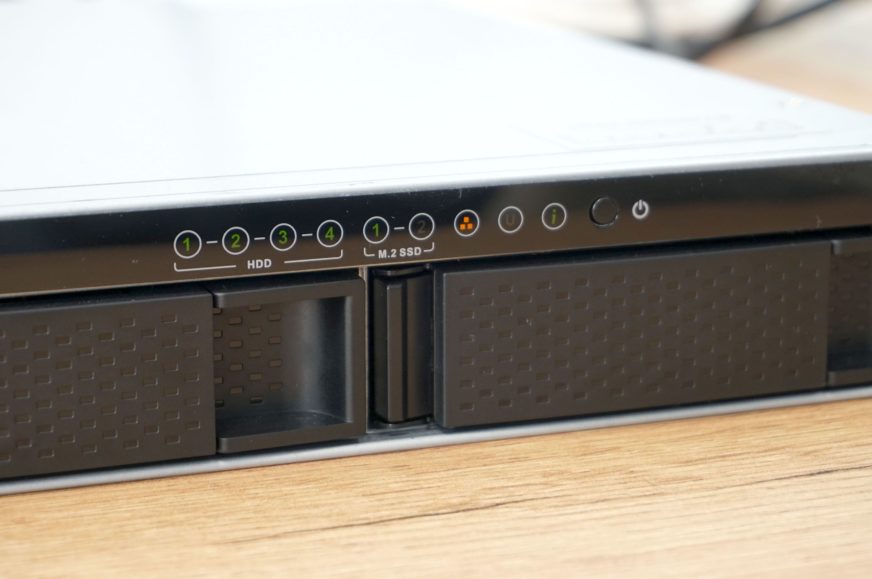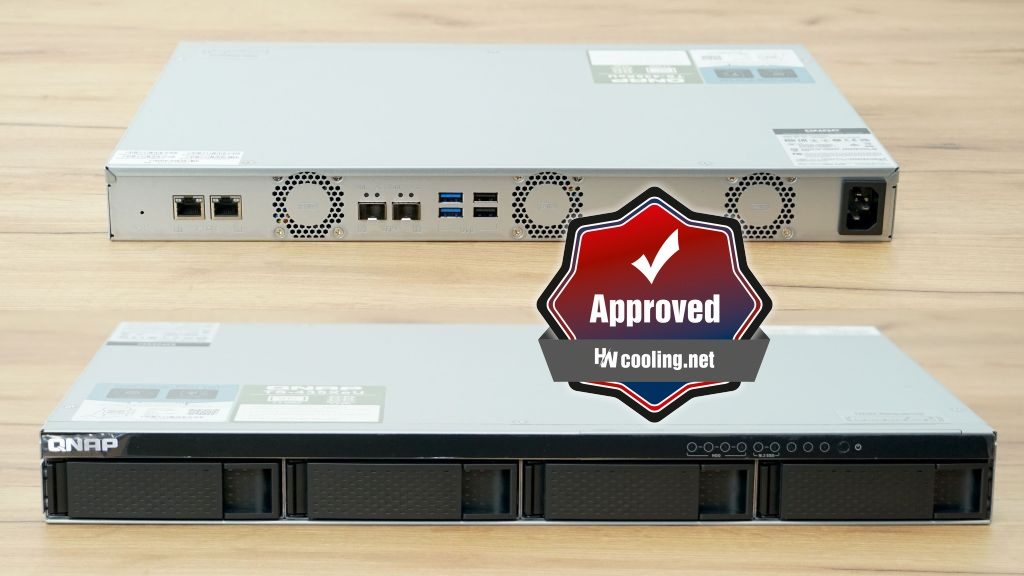Evaluation
Network storage is primarily used in enterprises and server farms, but it can also be used in a home. After all, who among us doesn’t have hundreds of photos and videos on our smartphones or cameras. Also not to forget regular backups and external HDDs, which are not really practical in this regard. But what to do if you’re looking for an affordable and quiet NAS, but with premium connectivity and six slots?
Evaluation
The QNAP TS-435XeU-4G is a NAS that impresses primarily with its low-profile 1U design for use in servers, but due to its low power draw and noise level, it is also suitable for a home environment. It is therefore not the case that you don’t even want to hear about server components at home because of their noise and power draw, at least in this case. The situation will definitely be different with a big and powerful Xeon/Epyc processor, but the ARM from Marvell is perfect for home use. Data backup and content streaming can be handled without any problems, moreover, thanks to the above-standard connectivity, it will not be a problem to connect the NAS to a 10 Gb switch or directly to a PC.
I also praise the presence of USB ports that can be used for easy data transfers from external storage. It’s just a pity that they are not in the front, because if you have a rack with a full rear panel, it will be quite difficult to get to them. In this situation, you’ll also appreciate how small this network storage is, as it uses a significantly scaled-down format compared to conventional server components. For easier handling, you can also get rails that allow you to slide the NAS out of the rack, but I didn’t have those available.
The pair of 2.5G RJ-45 and 10G SFP+ connectors is a really solid base even for the advanced user, it’s just a shame that there’s no room for a PCIe expansion card, which would allow you to get 10G RJ-45 or possibly higher speeds with SFP28 than 25G. On the other hand, you probably wouldn’t even be able to take advantage of higher transfer speeds, as the fastest storage you can fit is M.2 SSDs limited to PCI 3.0×1, which is 1GB/sec, approximately. Practically only a RAID 0 configuration would be able to use more than a 10G connection, and striping isn’t exactly a safe method for data storage. So for home or small business use I see no limits, unless your workflow requires higher real speeds than 1 GB/s, in which case you’ll need to reach for higher pure SSD models.
Strengths definitely include the QTS operating system or the service applications, which include Qfinder. The many features and uses of QTS are hard to fit into this review, but even from this short test we can say that the system is clear and easy to use for the layman, but even an advanced user will not get bored with it. Managing disks and creating storage pools and volumes is clearly outlined, yet I recommend playing around with it a bit before you get to the ideal combination. The large number of apps in the App Center, on the other hand, allow you to use the NAS for non-backup tasks, such as virtualization or different types of servers. There are so many options that you could spend days, even weeks, on them.
It is hard to find negatives, because it is a very specific product that I chose because of its low power draw and noise, but at the same time sufficient storage capacity and the possibility of connecting M.2 SSD and SSD cache function. The 1U server format will not be the most traditional solution in a home, but we will come across it in a series of articles on 10G home networking. This NAS will also be included in those articles.
Let us know in the comments how you back up your data, whether you use a NAS from one of the major manufacturers – Qnap or Synology, or even if there are some connoisseurs who have built their own on TrueNAS or another solution.
English translation and edit by Jozef Dudáš
| Qnap TS-435XeU |
| + Compact size with 1U height and half depth |
| + As many as six positions for inch format HDD/SSDs |
| + Low power draw and noise – suitable for home use as well |
| + QTS OS offers a wealth of features |
| + Easy to set up and use even for the layman |
| - Lacks the possibility of expansion via PCIe slot |
| - Poorer access to USB ports |
| - M.2 slots are limited to PCIe 3.0 ×1 with approx. 1 GB/s |









